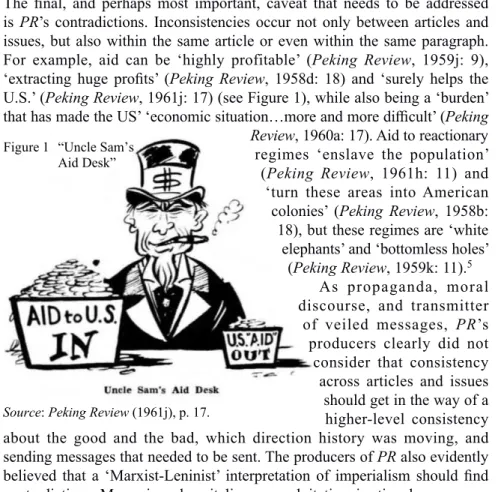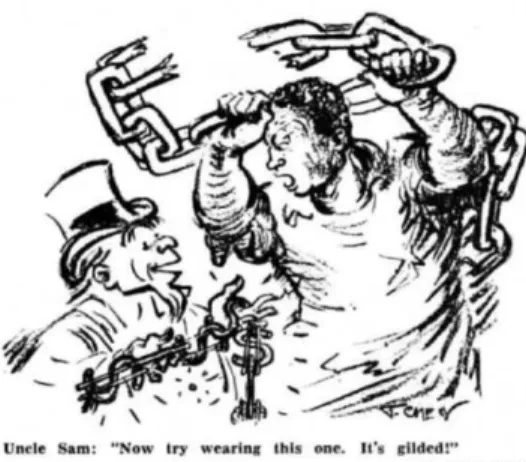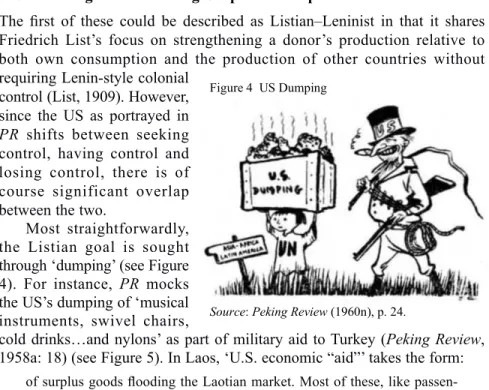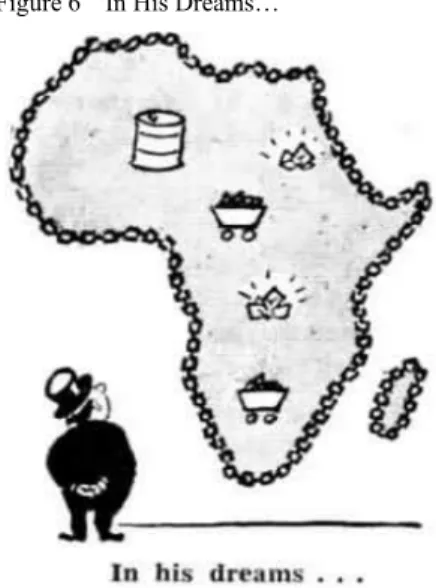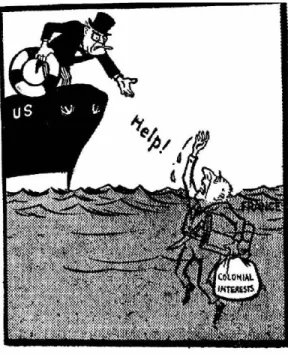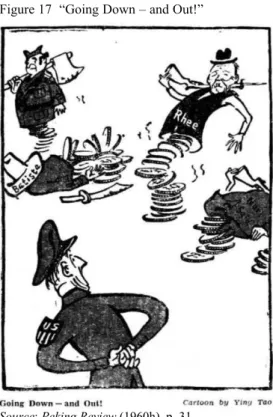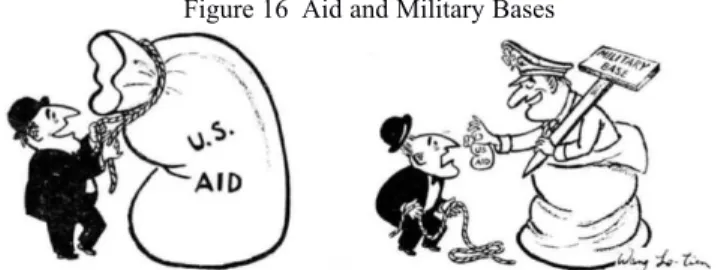The International Journal of China Studies is a bi-annual academic journal of the Institute of China Studies, University of Malaya, Malaysia. Editor, International Journal of China Studies Institute of Chinese Studies, University of Malaya 50603 Kuala Lumpur, Malaysia.
Peking Review: A Meaningful Record of Chinese Thinking on Aid?
PR also draws a sharp, clear line between socialist aid and the imperialists' so-called 'aid', which is 'totally different in nature'. Ultimately, I would argue, it is the public representation of the US (and to a lesser extent other Western donors) that has been most influentially transmitted through space and time, rather than the various individual and private images.
On the Correct Handling of Contradictions in PR
Whether the US appears strong or weak, aggressive or defensive at any given moment, it is a paper tiger that must be vigorously countered. This framework results in a depiction of the US aid donor as engaging in contradictory and self-defeating behavior.
Aid for Expansion
Another example is: 'The people will neither be bought by imperialism nor cowed by it. The deployment of aid and other tools was seen as taking 'current Soviet Cold War techniques' and using them against the Soviet Union (Truman Papers, 1950, April 12: 54-56).
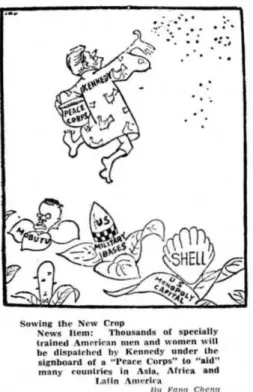
Economic Expansion Marxist-Leninist Style
Subsidizing Manufacturing Outputs and Inputs: List Meets Lenin The first of these could be described as Listian–Leninist in that it shares
Typical of the old capitalism, when free competition reigned undivided, was the export of goods. The last phase of capitalism, when monopolies rule, is characterized by the export of capital.
Subsidizing Overseas Investment
Cultivating Friendly Elites for Economic Expansion
Expanding Influence
Military Power Expansion
For Lenin (2010), under capitalism, war is the means for the imperialists to get their share of colonies and their. From this perspective, raw materials are not inputs to capitalism, but to militarism (Peking Review, 1960c: 26).
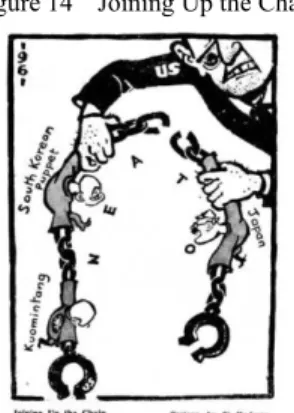
Concluding Discussion
2010), "The Gathering Storm: China's Challenge to US Power in Asia", The Chinese Journal of International Politics, Vol. 2007), Mao Zedong: A Political and Intellectual Portrait, Cambridge, UK: Polity Press. Peking Review: A Weekly Magazine of Chinese News and Views (1961p), Vol. 2015), "The Tenacious Tributary System", Journal of Contemporary China, Vol. 2013), The Great Rebalancering: Trade, Conflict, and the Perilous Road Ahead for the World Economy, Princeton, NY: Princeton University Press.
Absolved by the Telos of History
A Hermeneutic Approach to China’s Revolutionary (Non-)Interventionism
Introduction
By adopting a post-structuralist approach to Chinese foreign relations, this article aims to fill a gap in the existing literature on Chinese intervention and add to the body of scholarship on the power of discourse in Chinese foreign policy. This article then introduces a poststructuralist approach that asks "how" questions rather than "why" questions in relation to China's foreign policy practices and discourses.
China and (Non-)Intervention: A Historical Overview
As tempting as it is to write off those interventions as rare and limited, historical records show that China's involvement with the Third World countries. It should be noted that China's involvement with the Third World under Mao was by no means uniform, unitary or static.
Theoretical Framework
Paranoia in defending against the ideological legacies of Western imperialism implicitly accepts and condones the dominance of the West; to truly 'provincialize' the west (Chakrabarty, 2000), we must drop our paranoia and choose the theoretical framework on the basis of expediency rather than genesis. Europeans and Americans were constructed as subjects who could 'know' Filipinos; their superiority was taken for granted and was "an indisputable 'fact'" (Doty.
Methodology
The imbalance in material power between the West and the non-West is then reflected in the imbalance in representation. Therefore, delving into Chinese discourses, worldviews, and regimes of truth serves as a counterpoint to (mainly Western) representations and theorizing—or lack thereof—of the non-Western in the discipline of IR.
Analysis
The Chinese people are faithful to the Bandung Principles and have always been empathetic and supportive of the revolutionary struggle of the Afro-Asian peoples (People's Daily, 1960a). The prosperity of the Third World and the defeat of the imperialists were thus the “rules of historical development, unaffected by human will” (People's Daily, 1973). Wilson Center, 1964; People's Daily, 1959): when Third World countries asked for Chinese assistance, this element of consent made the intervention "perfectly just"; moreover, the requests coincided with the 'real desires of the people'.
The veracity of the Third World's claim for peace stemmed from their desire for independence, freedom and 'taking control of their own destiny' (People's Daily, 1955).
The Power of Discourse 1. Rationalizing Intervention
Although there is no mention of any challenges to China's dominant, official discourses,5 this article argues that China's discourses themselves can be understood as a form of resistance to Western Third World discourses. The pejorative characterization of non-Europeans as childlike, barbaric and uncivilized has actually been recorded for centuries: Francisco de Vitoria, in his critique of the Spanish Empire, claims that Americans are 'vile and barbaric', similar to. It is precisely against the background of uncivilized and primitive non-European Others that civilized and sophisticated European selves are defined (Lowe, 2015).
Given the evidence presented above, it becomes clear that the similar logic of binarism in China's discourse is a counter-narrative and resistance to the Euro-American/Eurocentric discourse.
Discussion
As the previous sections of this article have shown, under Mao the defeat of the imperialists and the victory of the Third World were framed as an "irrepressible historical trend" and "rules of historical development"; the victory of China is necessarily accompanied by the defeat of her enemies. Indeed, "the wheel of history will never turn back" and China "always stands on the right side of history" (People's Daily, 2021b). In the same speech Xi gave in France in 2014, he asserted that the Chinese dream of "pursuing peace" and.
The honesty/deception binary is also true: in MFA spokesperson Qin Gang's statement on China's crackdown on human rights activists in Xinjiang, Qin claimed: "the US has violated China's sovereignty under the banner of 'human rights ' and 'freedom' interfere" (People's Daily, 2014).
Conclusion
2020), “Chinese Storytelling in the Xi Jinping Era”, Haags Journal of Diplomacy, Vol. 2004), Contingent States: Greater China and Transnational Relations, Minneapolis, MN: University of Minnesota Press. A Hermeneutic Approach to China’s Revolutionary (Non-)Interventionism 55 New Directions in the Study of Chinese Foreign Policy, Stanford, CA: Stanford University Press. 2007), “The Confucian Continuity of Chinese Geopolitical Discourse”, Macalester International, Vol. 1994), “Perception and ideology in Chinese foreign policy”, in T.
Shijie Jingji yu Zhengzhi, Vol. 2021), Beyond Rigidity: China's Non-Intervention Policy in the Post-Cold War Period, Singapore: Springer Verlag.
The “China Factor” in the Northeast Component of India’s Act East Policy: Implications for
Security, Connectivity, Commerce
- Insurgency
- Sub-Regionalism
- Infrastructure
- Conclusion
Even in the midst of the pandemic, Myanmar handed over several rebels to India (Lintner, 2020). Another important aspect related to the 'China factor' in the Act East Policy and Northeast India is in relation to the construction of infrastructure in it. Northeast with India and infrastructure building by China near Northeast.
The China Factor” in the Northeast component of India's Eastern Policy Act 73 expressways and first-class highways are in use.
The Evolution of Mutual Benefit in China’s Foreign Aid Policy
The Establishment of the Mutual Benefit Principle in the Early Years of China’s Aid
Economic and technical cooperation between China and developing countries in Asia and Africa had improved significantly with the increase in Chinese foreign aid. Originally derived and developed from the Five Principles of Peaceful Coexistence and the spirit of the Bandung Conference, the Eight Principles laid down several ground rules for Chinese foreign aid at the time. Mutual benefits, along with other considerations such as non-interference and the development of self-reliance, are put forward as a basic principle of China's foreign aid policy.
In fact, prioritizing the interests of recipient countries became the main guideline of China's aid policy in the early period.
After the victory in the revolution, China will do everything to help the nations and peoples of the oppressed Asian, African and Latin American countries to fight for their independence and liberation (Mao Thus, China's aid policy declaration in the early period portrays an image of placing great emphasis on the needs and interests of the recipients. Compared with the eight principles, the four principles highlighted the importance of mutual benefit and the need for China's assistance to meet the interests of both sides. China's foreign policy and strategy is also making a turn, becoming more and more pragmatic and shifting to to focus and serve China's economic development (Deng, 1994a: 57; Wang, Y., 2011).
Pragmatism and the pursuit of “mutual benefit and common development” have become essential guidelines of China's aid policy after the reform and opening up (Huang, 2007).
Adjustment of the Mutual Benefit Principle from 2010 Onwards China’s foreign aid has witnessed significant growth in volume and scale
The guidelines that China's aid should "meet the needs of both sides" in the previous document have been changed to "accommodate the interests of recipient countries" and "meet the real needs of recipients" (see Appendix 3, Principles 3 and 4 ) in the 2011 Aid White Paper. Dealing with the relationship between "justice" and "benefit" and the concept that China should uphold the "correct sense of justice" become the main statement of China's aid policy. In the years following Wang's article, the phrase "correct sense of justice" was repeated dozens of times by Chinese leaders in public speeches or reports.
The Importance of Emphasizing Mutual Benefit in China's Foreign Aid Statements on China's Aid Policy Regarding the Principle of Mutual Benefit.
Significance of Stressing Mutual Benefit in China’s Foreign Aid The statements on China’s aid policy regarding the mutual benefit principle
Foreign aid has been used as an important diplomatic instrument to fulfill China's political goals. Consequently, China's foreign aid has increasingly turned to focusing on issues of common interest, such as global health cooperation, climate change, and humanitarian aid (Su and Li, 2019). After the Reform and Opening-up Policy, economic interest is given great importance in China's foreign aid policy.
Therefore, foreign aid has played an important role in directly benefiting China's economic development agenda and interests (Fuchs and Rudyak, 2019).
Conclusion
Mutual benefit will still have a practical implication in China's foreign aid, if not as a basic principle in policy statements. Her main research interests are international development aid and China's foreign policy and practice. 2016), China's Foreign Aid and Investment Diplomacy, Volume I: Nature, Scope and Origins, New York, NY: Springer.
全球评论,卷。 2019),习近平对外援助理论与中国对外援助实践。
Historiographic Analysis on Two Major American Journals on the
- Literature Review
- Research Methodology
- Short Introduction to the Cultural Revolution
- Result Findings: Monthly Review
- Cultural Revolution and Socialist Construction
- Result Findings of China Quarterly
- Some Success in the Education Institution
- Linking the Cultural Revolution to Contemporary China
- Conclusion
The institution that had been in the vortex since the eve of the Cultural Revolution was within the levels of education. The criticism of the educational institution before the Cultural Revolution was explained by Marianne Bastid. Most members of the Liu faction, such as Deng Xiaoping, were purged during the Cultural Revolution.
This movement was highly controversial and became one of the most criticized aspects of the Cultural Revolution.
Book Review
The book is motivated by the increasingly prominent role China is playing within the Malaysian investment landscape, particularly since the 2013 announcement of the Belt and Road Initiative (BRI). Second, and related to the previous point, the book sheds light on the heterogeneity of the state-business relations created by Chinese investment flows entering Malaysia. Although the book correctly highlights the centrality of the state in the Chinese economy, there remains ample room to discuss more comprehensively its findings in Malaysia in relation to 'state capitalism' scholarship.
Another, albeit minor, problem with the book is its referencing – some of the works cited in the text do not appear in the bibliography.
